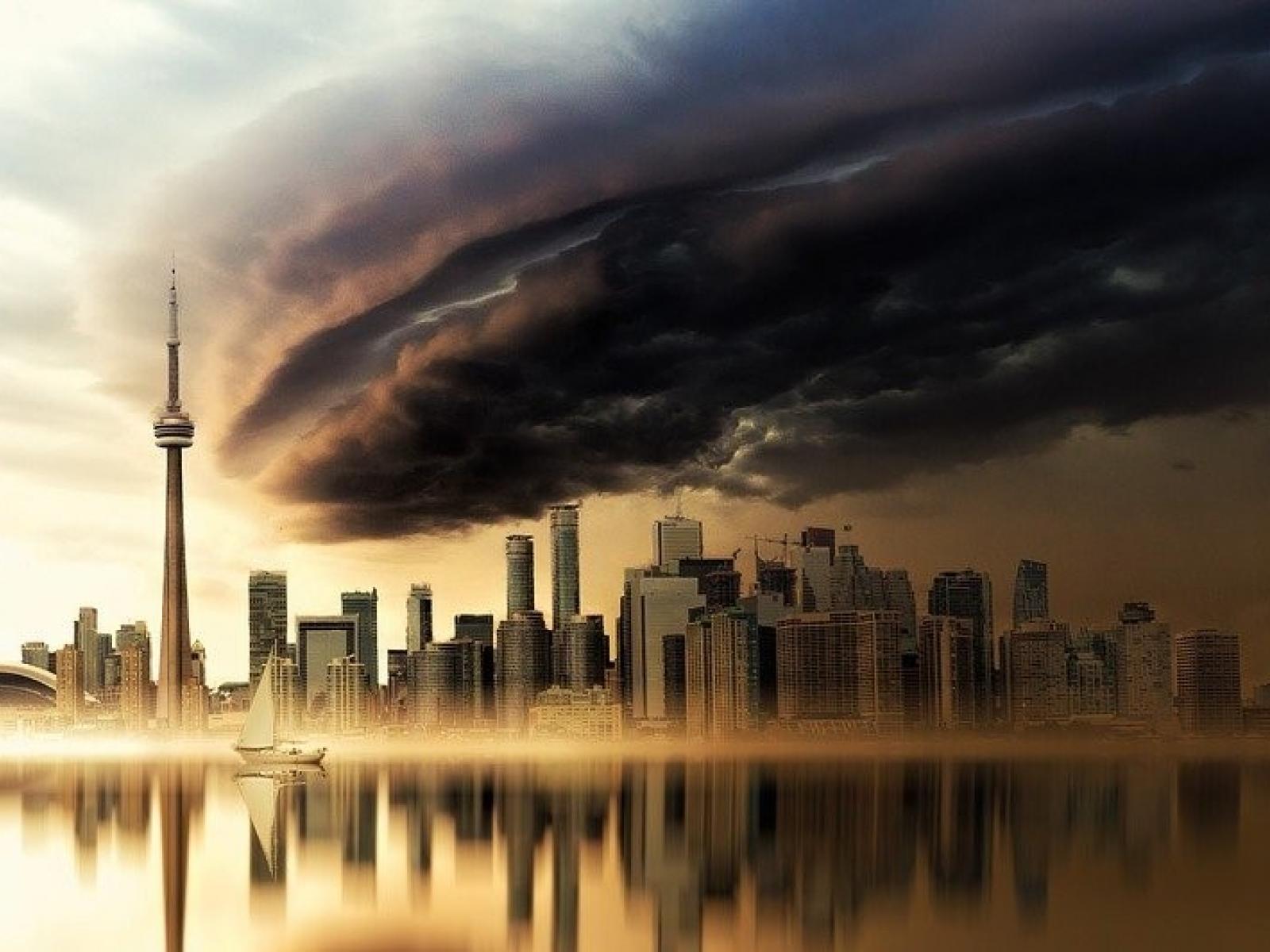Kansas City Urbanization Altered a Severe Hailstorm
The urbanization of Kansas City changed the path, intensified, and increased large hail production in severe convective storms

Urban land effects changed the path of a supercell storm, moving it toward Kansas City.
The Science
Urban land area will increase approximately six-fold by the end of the century, continuing the trend toward rapid urbanization. Urbanization-induced changes in land cover and corresponding anthropogenic aerosols can potentially affect the weather and climate. Past studies focused solely on how urbanization affects air quality and precipitation, but not severe convective storms and their associated weather hazards. Researchers focused on understanding how urbanization-induced land and aerosol changes affect supercell storm properties and their associated hail occurrences. They found that the urban land effect intensified the storm and diverted it toward the city. The urban land and anthropogenic aerosol effects work together to lead to more and larger hailstones.
The Impact
The recent and rapid increase in urbanization is expected to continue in upcoming decades. The changes in land cover and land use as well as the corresponding drastic boost in anthropogenic aerosols can influence extreme weather and climate. Understanding how these factors jointly affect severe convective storms and weather hazards such as large hail can help reduce uncertainties in weather and climate predictions, save lives, and reduce overall economic losses. These results show the multiple impacts of urbanization on a supercell storm in the central United States and can improve our fundamental understanding of how urbanization affects severe convective storms and hazardous weather.
Summary
Researchers investigated the impacts of Kansas City urbanization on a supercell storm and its associated weather hazard—hailstones. To gain a robust process-level understanding, they employed the following detailed models: the chemistry version of the Weather Research and Forecasting model coupled with a bin microphysics model and a multilayer urban model with a building energy model. The simulations were run at very high resolution (1-km grid spacing). The researchers first used observations to evaluate simulations of radar reflectivity, precipitation, and hail before performing model sensitivity tests to specifically examine the effects of urban land and anthropogenic aerosols. They found that the urban land effect of Kansas City initiated a much stronger convective cell, with the storm intensifying after interacting with the stronger turbulence induced by urban land. The urban land effect also changed the storm path by diverting the storm toward the city, mainly through enhanced low-level air convergence at urban–rural boundaries. The individual aerosol effect is small, but when combined with the urban land effect enhances large hail occurrences by ~20%. These results emphasize the importance of considering both effects when evaluating the influences of urbanization because of their nonlinear amplification.
PNNL Contact
Jiwen Fan, Pacific Northwest National Laboratory, Jiwen.Fan@pnnl.gov
Funding
This study was supported by the U.S. Department of Energy Early Career Research Program.
Published: April 12, 2021
Y. Lin, J. Fan, J.-H. Jeong, Y. Zhang, C. R. Homeyer, and J. Wang. “Urbanization-induced land and aerosol impacts on storm propagation and hail characteristics.” J. Atmos. Sci., 78, (2021). [DOI: 10.1175/JAS-D-20-0106.1]